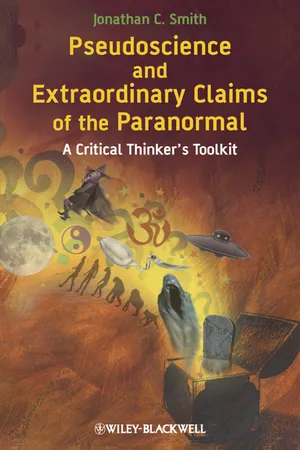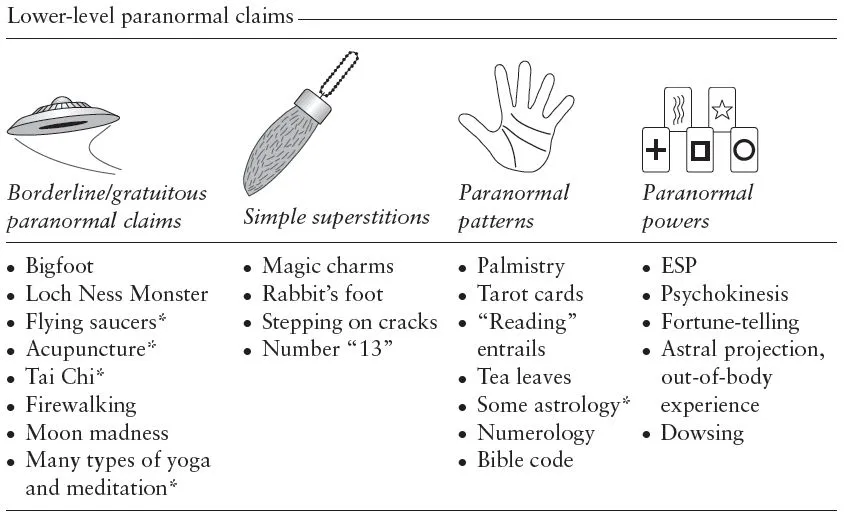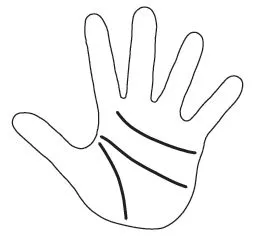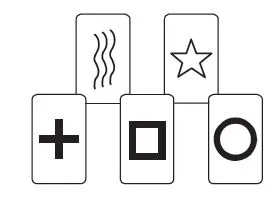
eBook - ePub
Pseudoscience and Extraordinary Claims of the Paranormal
A Critical Thinker's Toolkit
This is a test
- English
- ePUB (mobile friendly)
- Available on iOS & Android
eBook - ePub
Pseudoscience and Extraordinary Claims of the Paranormal
A Critical Thinker's Toolkit
Book details
Book preview
Table of contents
Citations
About This Book
Pseudoscience and Extraordinary Claims of the Paranormal: A Critical Thinker's Toolkit provides readers with a variety of "reality-checking" tools to analyze extraordinary claims and to determine their validity.
- Integrates simple yet powerful evaluative tools used by both paranormal believers and skeptics alike
- Introduces innovations such as a continuum for ranking paranormal claims and evaluating their implications
- Includes an innovative "Critical Thinker's Toolkit, " a systematic approach for performing reality checks on paranormal claims related to astrology, psychics, spiritualism, parapsychology, dream telepathy, mind-over-matter, prayer, life after death, creationism, and more
- Explores the five alternative hypotheses to consider when confronting a paranormal claim Reality Check boxes, integrated into the text, invite students to engage in further discussion and examination of claims
- Written in a lively, engaging style for students and general readers alike
Ancillaries: Testbank and PowerPoint slides available at www.wiley.com/go/pseudoscience
Frequently asked questions
At the moment all of our mobile-responsive ePub books are available to download via the app. Most of our PDFs are also available to download and we're working on making the final remaining ones downloadable now. Learn more here.
Both plans give you full access to the library and all of Perlego’s features. The only differences are the price and subscription period: With the annual plan you’ll save around 30% compared to 12 months on the monthly plan.
We are an online textbook subscription service, where you can get access to an entire online library for less than the price of a single book per month. With over 1 million books across 1000+ topics, we’ve got you covered! Learn more here.
Look out for the read-aloud symbol on your next book to see if you can listen to it. The read-aloud tool reads text aloud for you, highlighting the text as it is being read. You can pause it, speed it up and slow it down. Learn more here.
Yes, you can access Pseudoscience and Extraordinary Claims of the Paranormal by Jonathan C. Smith in PDF and/or ePUB format, as well as other popular books in Psicología & Historia y teoría en psicología. We have over one million books available in our catalogue for you to explore.
Information
Part I
Introduction
1
The Continuum Mysteriosum
There are more things in heaven and earth, Horatio, than are dreamt of in your philosophy.
Hamlet (I, v, 166–167)
All things bright and beautiful,
All creatures great and small,
All things wise and wonderful,
The Lord God made them all.
Famous Anglican Hymn (Monk, 1875)
‘Extraordinary claims require extraordinary evidence’
Popularized by Carl Sagan (Truzzi, 1976)
Have you ever made a wish that came true? Perhaps you carry a rabbit’s foot or read the daily horoscope. Maybe you avoid walking under ladders, stepping on sidewalk cracks, or spilling salt, comforted by the thought that you are still alive and kicking. Nearly everyone has a habit or belief that others might call a bit superstitious.
Then there are the bigger mysteries. People spend millions for energy manipulation cures, psychic readings, and faith healings. Terrorists commit history-altering acts of suicide and murder driven by promised rewards in the afterlife. What are we to make of this world of extraordinary and strange claims? Why do they persist in the face of science? Is it possible some are true? Does it matter?
Decades ago, I started looking into things paranormal and supernatural. I was a teenager and my interests were not quite those of a scholar. My childish and magical wish was to become famous, build time machines, develop superhuman powers, or find a secret way to get good grades or hot dates. Before long I realized I had opened a treasure chest of claims, too many to fully understand. Overwhelmed, I turned to the more manageable study of psychology. But my curiosity about the mysteries of life never completely went away. In fact, it is difficult to avoid the world of the paranormal and supernatural. Like the proverbial elephant, it sits conspicuously in the middle of the living room of life. If you ask the right questions, you will find that most of your friends, professors, doctors, or preachers harbor at least one secret superstition.
Making Sense out of Mysteries: The Continuum Mysteriosum1
This book tries to make sense out of the strange and unexplained. I have two goals, first to map the vast heavens of mysterious claims, and second to explore reality-checking tools for determining which are true or false. My mission is not to convert you into a true believer or true skeptic. Instead, the goal of this book is simple: Question fearlessly and honestly. I invite you to apply this challenge to all life’s mysteries, bright and beautiful, great and small.
What is the realm of the paranormal? This is a question of considerable interest to scholars. Clearly, mind-reading, astrology, and seeing into the future are paranormal claims. But what about acupuncture? Yoga? Space aliens? I prefer to begin with a very simple definition: paranormal claims contradict what we know about matter and energy2 as discovered through the science of physics. Put differently, a purely paranormal claim states that explanations consistent with the science of physics are not enough (see page 16).
Consider the following:
When playing the lottery, use the year of your birth and you are more likely to win. If this were to really work, with no tricks, it could not be explained in any way by science. The claimed event is paranormal.
A psychic can look at you and read what you are thinking. This is true, even if you are separated by a brick wall, the psychic doesn’t know you, and you deliberately think of cards randomly selected from a deck. This claim appears to rule out natural-world explanations such as reading body language and making good guesses based on what you are wearing. So it’s a genuine paranormal claim.
A nurse at a local hospital claims she can heal through therapeutic touch and cure your backache by gently waving her palm over your spine. Such cures could be due to many things. People get over backaches on their own. Expectation can play a large role. Once you rule out these other explanations, you may have something paranormal.
Some mysteries are bigger than others. Cherishing a magic rabbit’s foot isn’t as dramatic as going to war over an astrological reading. I find it useful to organize paranormal and supernatural claims into eight groups placed on a continuum mysteriosum (continuum of mysteries) according to the degree to which they challenge naturalistic views of matter and energy identified through physics. Minor or low-level paranormal claims are on the left while high-level paranormal claims are on the right. You can see that higher-level claims are more encompassing, complex, and organized. More aspects of the natural world are brought into question, with greater diversity, and organized into an abstract belief system, itself divorced from the natural world. Claimed low-level processes have limited impact on our world, whereas high-level claims have greater potential impact.
It should be noted that all truly paranormal claims by definition involve a fundamental violation of what we know about matter and energy. In that sense they are all equal. However, high-level paranormal claims are more elaborated than low-level claims. They more fully elucidate the implications and applications of a paranormal assumption, and posit additional parallel, perhaps equally improbable, assumptions. The belief that possessing a rabbit’s foot will help you win the lottery violates what we know about matter and energy. Nothing about the chemistry and physics of a disembodied and dried piece of mammal anatomy should affect the random selection of winning lottery tickets thousands of miles away. If this could happen, then why not assume that lines in the disembodied foot say something about your personality and future? Or that the foot possesses an energy that can cure warts? Or that the foot is indeed conscious and wants you to win the lottery and be wart-free? Or that the dead foot possesses the ghost of the recently deceased rabbit, a reincarnation of an ancient sage who is now your guardian angel and who wants you to be healthy, wart-free, and rich? All of these are equally improbable. All violate what we know about the properties of matter and energy. They differ primarily in their elaboration.
Flying saucer

Table 1.1 The Continuum Mysteriosum

* Many paranormal claims come in several varieties each of which might be classified differently. For example, the claim that acupuncture evokes brain endorphins is not paranormal. A vague claim that acupuncture triggers nebulous body energy can be classified as a simple energy claim. A claim that the arrangement of stars at the time of one’s birth contains information about one’s personality and future is a paranormal pattern. However, it is an energy claim to state that the stars contain some mysterious force that can influence life on earth.
Borderline and Gratuitous Paranormal Claims
Borderline paranormal claims concern mysteries that need not violate the world of physics; however, true paranormal explanations are not ruled out and are often entertained. For example, we have no clear evidence that flying saucers have visited the earth, but nothing in physics says that flying saucers from a different planet could not visit us. It might take a spaceship thousands of years using conventional rocket propulsion. Perhaps such a ship would be directed by robots or beings in hibernation. Or, to entertain a paranormal explanation, space aliens might slip from their home in the 13th dimension and instantly (and invisibly) appear on earth. Such a paranormal explanation invokes a claimed phenomenon (travel from the 13th dimension) that runs counter to the physical world we know.
Closer to home, acupuncture is an ancient Chinese medical procedure that involves inserting needles in precisely defined points on the body. Acupuncture patients claim relief from a wide range of problems ranging from pain to hypertension. The traditional paranormal explanation is that acupuncture frees the flow of a mystical vital energy, qi (or chi), resulting in healing. Qi has never been detected and does not operate by the known laws of physics. A variety of contemporary nonparanormal explanations exists, including that the slight discomfort of inserting needles distracts one from pain, triggers the release of peaceful brain endorphins, reinforces expectations of cure, and so on. Thus, acupuncture represents a borderline paranormal claim.

Cryptozoology is the study of “hidden animals” (“cryptids”), claimed creatures whose existence is controversial (Heuvelmans, 1962). Examples include the Loch Ness Monster, Bigfoot, and various dragons of antiquity. Strictly speaking, there is nothing paranormal about cryptids because their existence would not violate the laws of physics. However, a few psychics have made additional paranormal claims, for example, that Bigfoot and Nessie are from some other dimension and can be conjured up psychically (Bauer, 1996). In such cases one might classify cryptozoology as a borderline paranormal claim.
Gratuitous paranormal claims offer a nonphysical explanation when there is no mystery to be explained. Why do leaves fall from trees? Because little fairies pluck them off. Why did you fail your exam when you didn’t bother to read the textbook? Because Fate is punishing you for your irresponsibility. Why did your headache go away when you took the aspirin tablet? Because you unblocked the qi flowing to your brain. In each case there is nothing to be explained, no need for a paranormal hypothesis.
Rabbit’s foot

Note the difference between pure, borderline, and gratuitous paranormal claims. Pure paranormal claims imply that an extraordinary event can be explained only by going beyond current basic science. No alternative explanations are sufficient. Borderline and gratuitous paranormal claims accept that current scientific explanations may work just fine and paranormal explanations are simply alternatives. The remaining claims we consider are purely paranormal.
Simple Superstitions
Simple superstitions refer to everyday events that seem to violate the laws of physics. Generally, they are based on coincidence, folklore, as well as “similarities,” or “contagion” (Frazer, 1911–1915). If you coincidentally won a card game while wearing a red shirt, you might wear this lucky shirt whenever playing cards. If your great-grandmother warned you never to peek at birthday presents, you might honor this rule because it is a bit of family folklore. Perhaps you think you are a bright and sunny person because of this similarity—you were born on a bright and sunny day. Maybe you shouldn’t wear your great-grandfather’s ring. After all, he wore it just before falling into the well, and you don’t want to “catch” his unfortunate luck. Simple superstitions are not encompassing, complex, and organized. Generally their broader implications are ignored or not elaborated. People do not devote careers to the risks of stepping on sidewalk cracks or avoiding the number “13.” There are no rumors of secret Russian labs studying the feet of rabbits.
Paranormal Patterns
Are there secret messages embedded in the creases of your palm, tarot cards, tea leaves, entrails of sacrificial lambs, I Ching symbols, special combinations of numbers, the Bible code, and heavenly constellations? A relatively simple paranormal claim asserts that certain patterns contain special information that cannot be explained through any means consistent with contemporary physics. Palmistry claims that the wrinkles in the palm of your hand contain vast information about your history, personality, and future. There is no physical way this could be the case. Similarly, ancient tarot picture cards, particles of tea at the bottom of a tea cup, and the arrangement of intestines in a slaughtered lamb can be equally revealing. And of course astrology claims that the patterns of heavenly bodies present at the moment of your birth can say much about your life and future. Although such patterns may possess paranormal information, typically an individual with no paranormal ability can “read” the messages contained. Anyone with a book on palmistry can discover the secrets hidden in the wrinkles of a hand, and the message of a long “life line.”
Open palm with lines (for palm-reading)

Paranormal Powers
Paranormal powers are limited human (and possibly animal) capacities that violate physics. However, few people possess or have cultivated such powers and these gifted individuals appear to be able to use them only in highly restricted circumstances. Examples include reading thoughts through extrasensory perception or bending spoons (or influencing the roll of a casino slot machine) through psychokinesis. People have devoted their careers to these topics. Libraries of books and articles have been written.
Zener cards

Simple Life Energies
Unlike paranormal powers, which may be limited and appear in select individuals at select times, simple life energies are enduring and more pervasive. Furthermore, they have the potential for affecting physical health and biological processes. For example, many practitioners of acupuncture believe that a mysterious paranormal energy, qi (chi), permeates the human body and can be “unblocked” through the strategic insertion of needles. Unlike fate or karma, such forces do not guide, direct, or provide a purpose for actions. And unlike ghosts or spirits, they lack psychological characteristics such as thoughts, feelings, and intentions. However, simple life energies can be tapped and directed by individuals with paranormal powers. A skilled acupuncturist claims to use qi to heal.
Acupuncturist inserting needles in patient

Intelligent Forces and Entities
Intelligent forces are also enduring and exist beyond the natural world. However, they have a complexity not possessed by life energies—an “intelligence” of their own that does not require the assistance of someone with a paranormal power. Such forces may be impersonal sources of guidance or direction, such as fate, yin/yang, the powers of prophetic astrology, karma, some nonphysical evolutionary principle that pushes toward “goodness” or “higher consciousness.” Alternatively, intelligent forces may have psychological characteristics, such as consciousness, thoughts, feelings, and intentions, all internal complexities that enable us to call them entities.3 Examples include living objects possessed by spirits that wish us well.

Afterlife Entities
Afterlife entities are intelligent forces with one spectacular additional characteristic—they exist in this world and the world after death. They might include reincarnated souls as well as ghosts and some spirits. The existence of such entities permits communication with the dead.
Ghost over tombstone

Supernatural Entities
Supernatural claims are “superparanormal” and go beyond challenging naturalisti...
Table of contents
- Cover
- Series
- Dedication
- Title page
- Copyright
- About the Author
- Preface
- Acknowledgments
- PART I: INTRODUCTION
- PART II: THE CRITICAL THINKERS TOOLKIT
- PART III: THE PARANORMAL FILES
- Appendix A Complementary and Alternative Medicine
- Appendix B Critical Thinking and Paranormal Resources
- Appendix C Susan Blackmore on Paranormal Research
- Notes
- References
- Name Index
- Subject Index